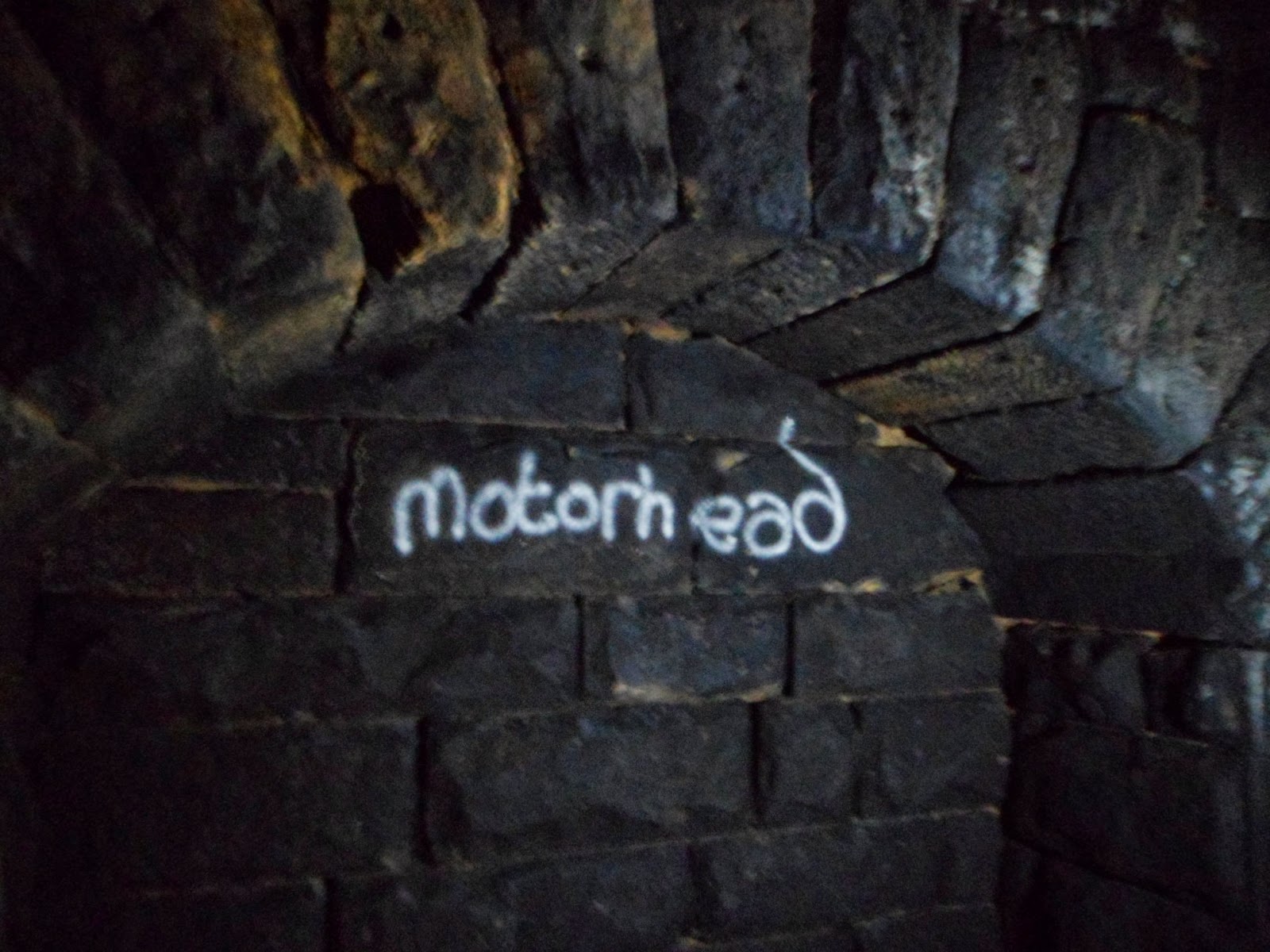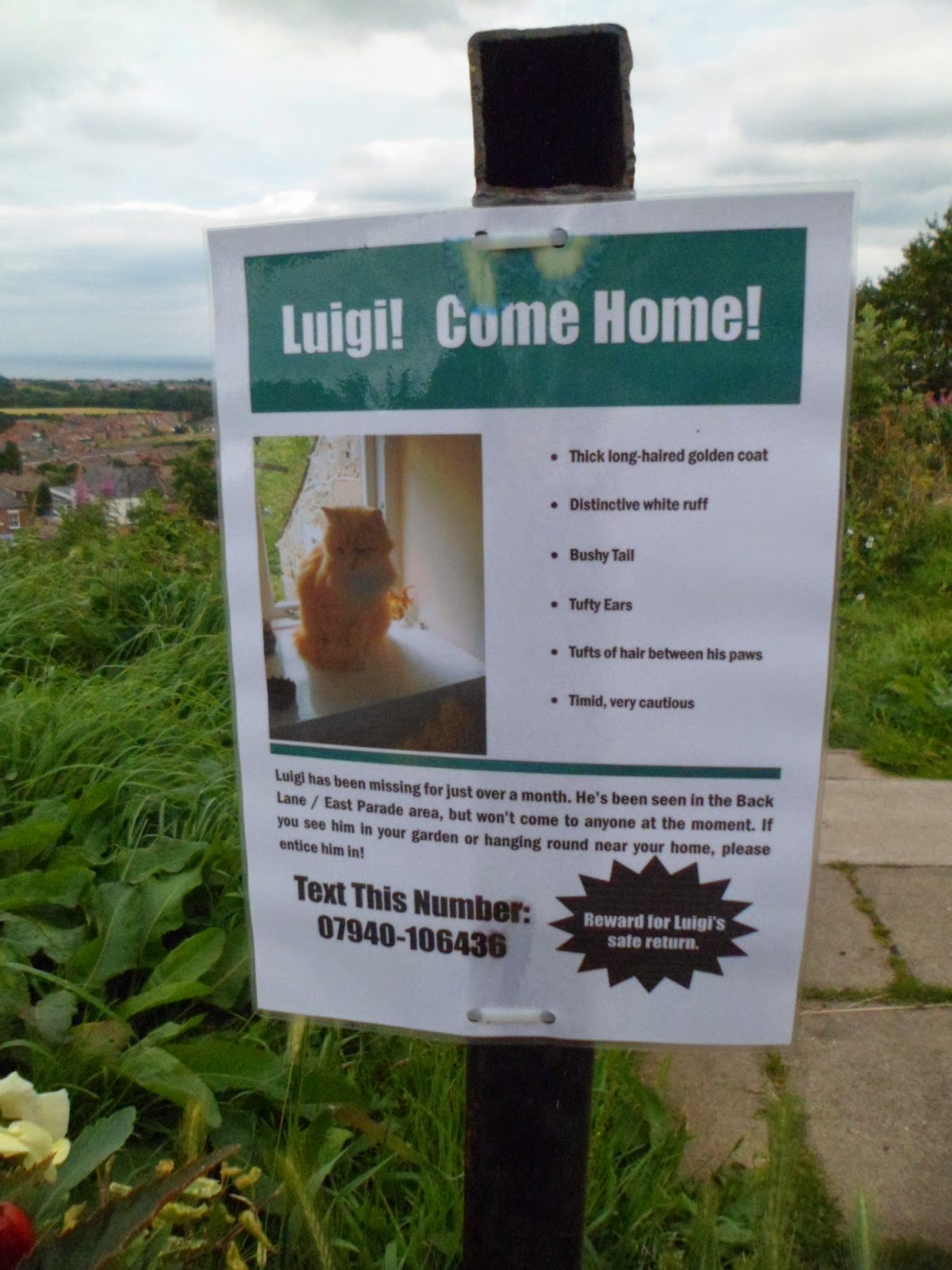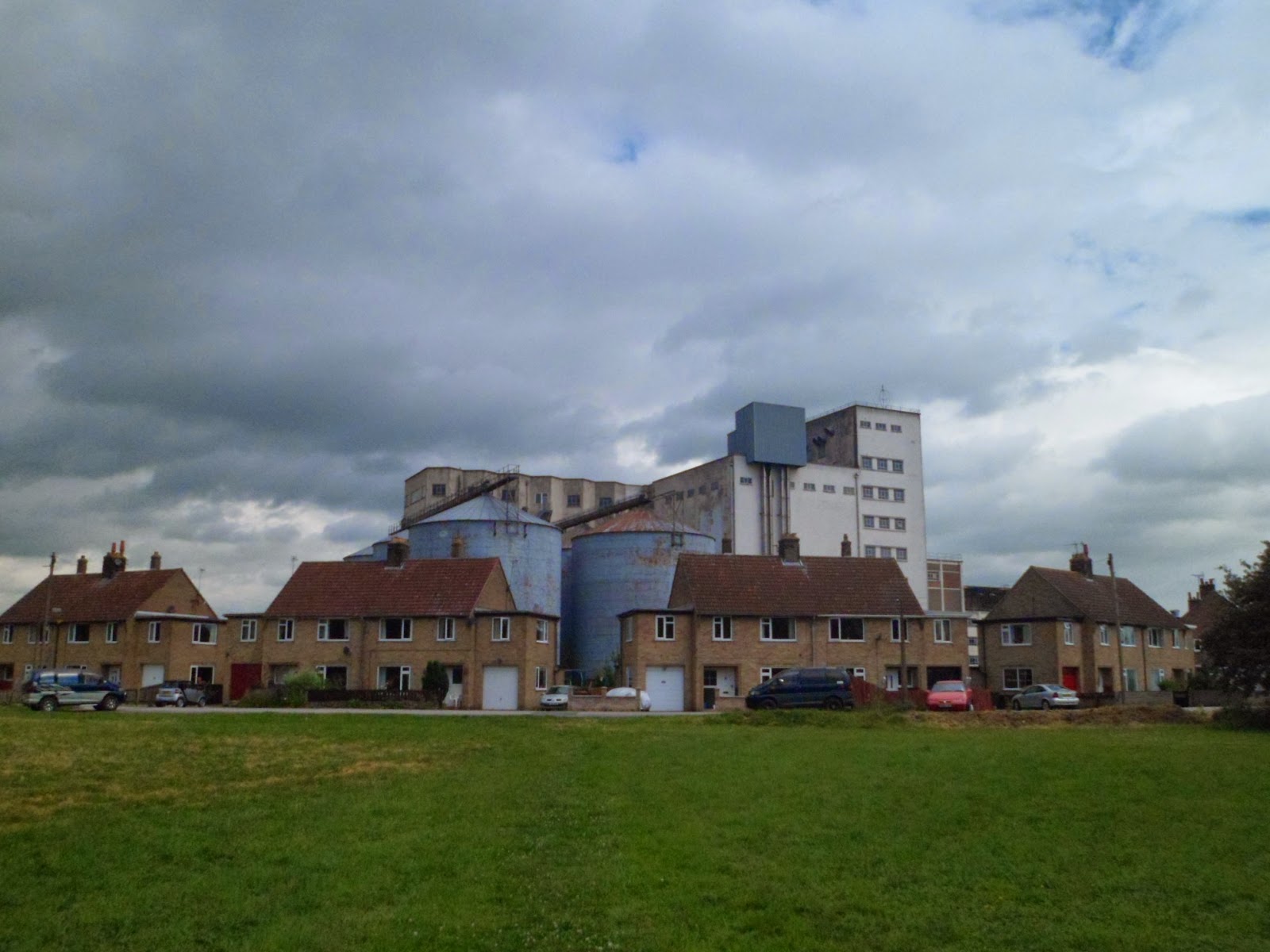After a long, tedious journey on the bus, listening to some desperately irritating small children talking about poo and wee, I finally arrived at Nawton - a village whose sole claim to fame is that a tree grows up through the middle of the bus stop. Sadly, the tree appears to have been removed so the bus stop now just has a hole in the ceiling.
With my trusty OS map in hand, I set off down the nearest side road to the dotted line marked "Disused Railway". It wasn't the right side road. It led to a school gate and a field. I had a piss against someone's back gate (not a euphemism), then got barked at by a dog, got stung by some nettles, and went back to the main road.
 Passing through the village, I was very disappointed to discover I had missed the "Grand Potato Weigh-In" - it having taken place last Saturday.
Passing through the village, I was very disappointed to discover I had missed the "Grand Potato Weigh-In" - it having taken place last Saturday.
The old station turned out to be down a road called Station Road (!), next to a branch of Calvert's Carpets (who, incidentally, provided the carpet in my hallway). The weigh office (or maybe the coal office?) is still there, and the station buildings are all still complete - they appear to be part of a holiday complex of eco-bungalows, but I won't hold it against them...
 |
| Nawton - nice station, gormless face. Sorry. |
I walked for a while along the A170, past some roadworks, and a selection of tractors being delivered to Pickering Traction Engine Rally - it starts tomorrow - then followed onto the old route, towards Kirkdale.
Reaching Kirkdale (where there was never a station. Or really, even a village...), I first of all had a look in the Saxon church - St Gregory's Minster - and lit a candle, and wrote in the book of people you'd like them to pray for. I'm not particularly religious, but it's got a very peculiar atmosphere.I think maybe memories of over a thousand years of people passing in and out of the building have left a sort of ingrained presence in the air.
After the church, the road drops down to the river - the Hodge Beck - crosses it by a ford, and then heads uphill again. Or that's what it normally does - today the river was totally empty, so I took the opportunity to walk along the riverbed, to see the Kirkdale Viaduct, which is normally hidden from all public viewpoints.
There's something quite surreal about walking along a riverbed. There was even some riverbed roadkill - a desiccated-husk of a dead rabbit, mummifying in the July heat.
Viaduct thoroughly viewed, I retraced my steps to the lane - I passed Kirkdale Cave but Homo-Torch wasn't with me so didn't go inside, so I can't confirm any new discoveries of prehistoric hippos/rhinos/camels or the like.
The next village (maybe a town?) was Kirkbymoorside, just a short way further on. I knew already the old station was demolished, so to make the best of a bad job I had a mooch around the main street, looking for pastry-goods, so it wouldn't be a total failure of a place.
 In fact, it was quite nice - it was market day, and unlike most British markets there was more variety than I expected. It wasn't the normal array of cheap sports socks, stolen electrical goods and cheap Chinese toys - there was a fishmonger, a cheese van, people selling meaty things... positively continental! And then, further up the Market Place I found the library - and unlike Helmsley last week, it was actually open, so I went in and borrowed a book just to prove a point.
In fact, it was quite nice - it was market day, and unlike most British markets there was more variety than I expected. It wasn't the normal array of cheap sports socks, stolen electrical goods and cheap Chinese toys - there was a fishmonger, a cheese van, people selling meaty things... positively continental! And then, further up the Market Place I found the library - and unlike Helmsley last week, it was actually open, so I went in and borrowed a book just to prove a point.
I found a nice butchers' shop for provisions - it was after all, around 2pm, and I'd had no breakfast. I got a pork pie, a sausage roll and a Scotch egg, for the grand total of £2.30, and headed down towards the old station in good spirits...
 |
| Kirby Moorside. You fail. And your spelling doesn't even match where you are! |
Luckily the next stage of my journey took me through a field of fat, jolly sheep, which cheered me up somewhat as I continued eastward towards my intended destination. My OS map informed me at one point I was passing a sewage works, but it was well-screened behind a hedge (and didn't smell).
Walking through Keldholme there was another farm with further sheep, and I learnt a new fact: Sheep can cough!
Another stretch of main road followed - even more tractors being delivered to Pickering, along with the odd combine harvester - then after a bridge over the River Seven (like the number - not the Welsh border) - I reached Sinnington's old station.
 |
| Sinnington |
With my stations of the day now all collected there was time before the next bus to walk into Sinnington itself and have a pint in the Fox & Hounds - a beautiful old country inn, set between the village green and the riverbank, with a good range of taxidermied animimals in the windows.
At least, that was the plan. It was 3.15pm...
Stupid rural pub-opening hours!




















































